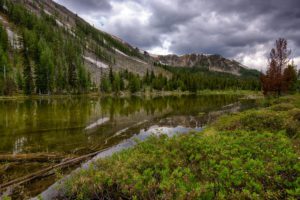Photo courtesy of Noppadol Paothong
For Immediate Release, November 9, 2023
Contact:
Erik Molvar, Western Watersheds Project, (307) 399-7910, emolvar@westernwatersheds.org
Lindsay Larris, WildEarth Guardians, (310) 923-1465, LLarris@wildearthguardians.org
Noah Greenwald, Center for Biological Diversity, (503) 484-7495, ngreenwald@biologicaldiversity.org
DENVER – The conservation groups most active in Gunnison sage-grouse protection efforts today issued their initial analysis of the Bureau of Land Management’s draft plan to protect this bird’s key habitats on public lands in western Colorado and southeastern Utah. The Gunnison sage-grouse is listed as a threatened species under the Endangered Species Act, and 1.4 million acres, much of it federally managed, has been designated as Critical Habitat essential to the preservation of the species. The plan will determine what kinds of commercial and industrial activities will be permitted – and excluded – from the lands essential to the grouse, and divides this habitat into Occupied Habitat Management Areas (OHMAs) and Unoccupied Management Areas (UHMAs), and some plan alternatives also would protect Linkage-Connectivity areas and Adjacent Non-Habitat. With only 3,600 Gunnison sage-grouse left in the world, there is little room for error.
“The agency’s preferred alternative is surprisingly weak, and in some cases doesn’t measure up to the habitat protections that already apply for the unlisted greater sage-grouse,” said Erik Molvar, a wildlife biologist and executive director with Western Watersheds Project. “The agency’s preferred plan is going to need a major overhaul, strengthening protections on issues including livestock grazing, road construction, and energy development, if the federal government is to do its part to help restore Gunnison sage grouse to the healthy and abundant populations necessary for the full recovery of the species.”
Sage grouse display and mate at special dancing grounds, called leks. The Bureau’s preferred plan alternative applies a suite of different lek buffer distances for different activities, some (like tall structures) too small to protect the nesting habitat that surrounds the lek within a 4-mile buffer. Within each lek buffer, the agency’s preferred plan would only “minimize” the damaging activities, instead of excluding them entirely as is done under the West-wide greater sage-grouse plans.
“The BLM’s preferred alternative doesn’t do enough to protect the severely endangered Gunnison sage grouse,” said Noah Greenwald, endangered species director at the Center. “If this remarkable bird is going to survive it needs large areas where livestock grazing and energy extraction are off limits, which this plan fails to provide.”
The 3% habitat disturbance limit in the greater sage-grouse plans has drawn criticism due to the continued decline of that bird, and the preferred plan improves slightly on this, limiting disturbance to 2% in OHMA while allowing 3% disturbance in UHMA. In other key aspects, the agency’s Gunnison sage grouse blueprint offers significantly less protection than the greater sage-grouse plans. For example, industrial site density restrictions (one site per square mile) were excluded from the agency’s preferred Gunnison sage-grouse plan, and grass height retention for sage grouse nesting habitats – 7 inches in most greater sage-grouse plans to provide necessary concealment cover for the birds – are not specified here for the Gunnison sage-grouse.
The agency’s preferred plan would also incorporate several strategies that have been broadly discredited in the sage grouse science. Vegetation treatments targeting sagebrush have almost universally been found to be harmful to sage grouse and are broadly condemned in the scientific literature. Predator-killing programs likewise have been discredited as being ineffective in boosting sage grouse numbers and in some case resulting in even greater sage-grouse losses. Both of these controversial and counterproductive strategies are not only incorporated into the Bureau’s preferred alternative, but are authorized under every alternative under consideration. Wisely, the Bureau excluded these from the earlier greater sage-grouse plans.
“This is a puzzling capitulation to the opponents of sage-grouse conservation, who for a century have been doing the real damage to sage-grouse and their habitats, but who want to point the finger of blame somewhere else,” said Molvar.
The plan will be open to public comment and input of scientific information through February 6th, 2024, and the conservation groups intend to provide a comprehensive, science-based input to try to straighten out the problematic aspects of the initial draft.
“As the Gunnison sage-grouse population circles the drain in southwest Colorado, it is critical that the Bureau of Land Management takes its role seriously to prevent the impending extinction of this gravely imperiled species,” said Lindsay Larris, wildlife program director at WildEarth Guardians. “It’s deeply troubling that the Bureau of Land Management is still trying to shoehorn more biologically incompatible commercial uses into the last remaining critical habitat for the Gunnison sage-grouse. As the 50th anniversary of the Endangered Species Act approaches, we need to remind federal agencies of their legal obligation to affirmatively recover species in decline and not just leave a token population on life support indefinitely.”
WildEarth Guardians, Western Watersheds Project, and Center for Biological Diversity were active in advocating for the listing of the Gunnison sage-grouse and designation of Critical Habitat, and all three intervened to successfully defend the listing decision in a 2017 court case.
###






